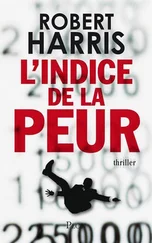On this same day, 1 May, Gretl decided the time had come to comply with her sister’s last request. For assistance she turned to a young SS major named Johannes Goehler. According to a post-war investigation by US intelligence, ‘Gretl said that she would like him to take charge of the safekeeping of a large chest of letters which had been entrusted to her. They were letters between her sister, Eva Braun, and Hitler. The chest, about the size of an officer’s trunk, was in a cave near the Berghof.’ Goehler promised to help. He rang one of his subordinates, SS Captain Erwin Haufler, and instructed him to send a truck to Berchtesgaden immediately. That night Eva Braun’s chest, along with a clothes basket, was evacuated to the local SS headquarters in Fischhorn Castle in Austria.
For the next week they stood, objects of intense curiosity, in a corner of Haufler’s office. The basket, which was open, was found to contain Eva Braun’s photograph albums of life at the Berghof, ‘a few small framed pictures’ and some rolls of film. The trunk was locked. After several days of speculation, Haufler and his SS cronies eventually plucked up the courage to break it open. Inside was a treasure trove of Hitler memorabilia. There was an assortment of the Führer’s architectural drawings: ‘made in pencil,’ Haufler told the Americans after the war, ‘depicting floor plans and the like. I saw one sketch which seemed to represent a church.’ There was a box of Hitler’s stationery. There was a book belonging to Mussolini and another, in Eva Braun’s handwriting, in which she had made notes of her letters to Hitler. There was an album entitled ‘Enemy Propaganda in Stamps’. ‘Then there was a pair of black trousers,’ recalled Haufler, ‘badly ripped, or rather slit, and also a coat, which was field grey,’ bearing the insignia of the German eagle. This, the SS men correctly assumed, was the uniform Hitler had been wearing at the time of the attempt on his life in July 1944: in an emotional moment, the Führer had sent it to Eva to keep as a souvenir. But what most captured the soldiers’ interest were the letters. The trunk was three-quarters full of them: ‘at least 250,’ estimated Haufler, with another thirty or forty postcards. These were Hitler’s letters to Eva Braun, a lovingly preserved record of their ten-year relationship. Haufler picked up one. ‘My dear Pascherl,’ it began, ‘I send you my heartiest greetings.’ It was signed ‘your Adolf Hitler’.
Precisely what happened next is unclear. According to Haufler, he handed the trunk over to his administrative officer, Franz Konrad, with instructions to burn it to prevent its contents falling into Allied hands. But Konrad, a notoriously corrupt SS captain, whose activities during the German occupation of Warsaw had earned him the title ‘King of the Ghetto’, disobeyed him. In the final hours of the war he sent a truck loaded with looted treasure to his brother’s house in the nearby Austrian town of Schladming. Hidden among the canned food, the liquor and the radios were two suitcases and a metal trunk with Eva Braun’s name tag attached to it. ‘Make sure you get through,’ the driver alleged Konrad told him. ‘If you get stopped on the way, take the two bags and the chest and make off. If everything else should go wrong, you must save those three things.’
Acting on this information, on 24 August 1945, agents from the US Counter-Intelligence Corps (CIC) raided the home of Konrad’s brother and seized the Hitler uniform, Eva Braun’s private photograph albums, her silverware, the notes she had made of her letters to Hitler, and the stamp collection. A second cache of material, which Konrad had given to his mother to hide, was recovered in October. This haul included twenty-eight reels of colour film – Eva Braun’s home movies of her life with Hitler. All these objects were turned over to the American Army and shipped back to the United States. But of Hitler’s letters, by far the most interesting items, there was no sign. Thirty years later, David Irving once more set out to track them down. His conclusion, after months of inquiry, was that they were discovered near Berchtesgaden by one of the CIC officers who promptly stole them for himself. They have now disappeared into the archives of a private collector in the USA.
In addition to the property of Eva Braun, Konrad also appears to have stolen the correspondence between Hitler and the leader of the SS, Heinrich Himmler. The files had been transferred for safekeeping from Himmler’s headquarters to the library at Fischhorn Castle where they were kept in a steel cabinet, guarded by Himmler’s orderlies. After Hitler’s suicide, Konrad was assigned to help destroy them, but admitted to the Americans after the war that he put a set of the most interesting documents to one side. Shortly afterwards he turned up at the home of his secretary, Martha von Boskowitz, and gave her a package ‘about 18 inches long, 6 inches thick and 4 inches wide’. He told her that the tightly wrapped parcel contained his ‘personal letters’ and asked her to hold on to them, ‘in case anything should happen to me’. About six weeks later another SS man called and took the package away. It, too, has disappeared.
In the course of their investigations, the CIC also began picking up rumours of the existence of Hitler’s ‘diaries’. According to Colonel Wilhelm Spacil of the Reich Main Security Office (RSHA) Franz Konrad boasted to him at the beginning of May 1945 that, in addition to all his other treasures, he was in possession of ‘the diary of Hitler, written on very thin paper’ which he had hidden in a specially made zinc box. The CIC asked Captain Haufler what he knew of such diaries. Haufler described how two weeks before the end of the war he had been at the Berghof when an air raid alarm sounded. He and Gretl Braun, along with the Berghof’s housekeeper, Frau Mittelstrasser, took shelter in the underground bunker. The two women showed him around part of the labyrinth of tunnels which extended for nearly two miles beneath the mountain.
I was only allowed to stand at the doorway to the Führer’s room [recalled Haufler]. Frau Mittelstrasser pointed out several things in the room: for example, there were 5000 phonograph records stored there. Among other things, she pointed out the ‘personal notes’ of the Führer. These were contained in four or five large books which stood near the desk. Of course, everyone knew that Hitler kept a diary. The books were firmly bound, and not quite as big as a Leitz-Ordner [a loose-leaf filej. I can’t tell you anything more about them, for I only saw them from a distance, and didn’t even have them in my hand. I never saw these books again.
In the absence of any other hard information, the CIC investigation petered out. Gretl Braun dismissed Haufler’s story. ‘Hitler didn’t keep any diaries,’ she told a CIC agent. ‘The books which were standing in the air raid shelter in the Berghof were not diaries, but rather minutes of the day’s activities, which were kept by whoever was the Führer’s adjutant at the time.’ And Franz Konrad, despite prolonged interrogation, insisted that he knew nothing of such books, that Spacil was mistaken, that he must be muddling the ‘diaries’ with Eva Braun’s notebooks which he confessed to having stolen. At the height of the debate over the Hitler diaries’ authenticity in 1983, the Sunday Times clutched at the straw offered by the CIC files. Quoting only the testimony of Spacil and Haufler, the paper used the information to try to refute claims that there had never been any suggestion that Hitler kept a diary. But given the paucity of evidence, and even allowing for the unreliability of the witnesses, the likelihood is that the references to ‘diaries’ which creep into a couple of CIC reports are actually the result of a misunderstanding.
Читать дальше












